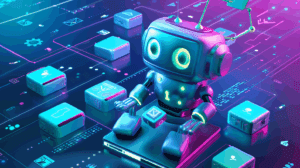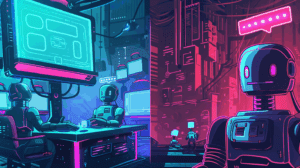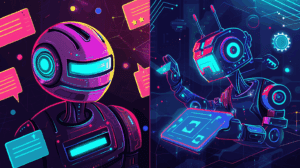AI agents feel magical, like having a super-competent assistant who never sleeps, forgets, or gets distracted. But behind that magic? There’s a real tech stack quietly doing the heavy lifting. This is what we call the AI Agent Tech Stack.
If you’ve ever wondered how these agents actually work, here’s a peek behind the curtain, explained in plain English. Understanding the AI Agent Tech Stack is key to unlocking these wonders.
Large Language Models (LLMs), The Brain
At the heart of every AI agent is a large language model, like GPT-4, Claude, or Gemini. These models have been trained on massive amounts of data to understand and generate human language. They form a fundamental part of the AI Agent Tech Stack.
They give the agent its ability to: Understand your prompts,
Generate responses that feel natural,
Reason through steps or options.
Think of the LLM as the brain that makes sense of the world, but it still needs help to get things done.
Task Orchestration, The Executive Function
Knowing what to do is one thing, actually doing it in the right order is another. The AI Agent Tech Stack ensures tasks are executed correctly.
That’s where orchestration comes in. This layer coordinates actions, tracks progress, and keeps the agent focused.
For example, if you ask an agent to schedule a meeting, it might need to: Check your calendar,
Email a participant,
Confirm availability,
Book the slot.
The orchestrator makes sure each of those steps happens smoothly and in sequence.
Memory and Context, The Short-Term Recall
Without memory, your AI agent would be like a goldfish.
Modern agents use short-term memory to retain context within a session, like remembering what you said two prompts ago. Some even have long-term memory to track preferences over time (e.g., “I prefer meetings in the morning”).
Memory makes your agent feel more intelligent and more personal.
Tool Integration, The Hands
AI agents don’t just talk, they act.
To do that, they need integrations, APIs, plugins, browser control, or custom scripts that let them: Send emails,
Book meetings,
Update docs,
Trigger workflows.
These integrations are the agent’s hands in the digital world. Without them, it’s all brain and no action.
User Interface, The Face
Finally, your AI agent needs a way to interact with you.
That could be: A chat interface,
A voice assistant,
A Slack bot,
A browser extension.
The interface is how you give instructions and get feedback, so design matters. This layer, being part of the AI Agent Tech Stack, ensures seamless interaction.
Final Thoughts, The Stack Is the Magic
The real magic of AI agents isn’t in any single layer. It’s in how they all work together as a cohesive AI Agent Tech Stack.
The language model thinks. The orchestrator plans. The memory remembers. The integrations act. And the interface connects it all to you.
That’s your digital teammate, not a single tool, but a full stack of intelligence and action.
And the best part? You don’t have to build it from scratch. You just need to know how to put it to work.



